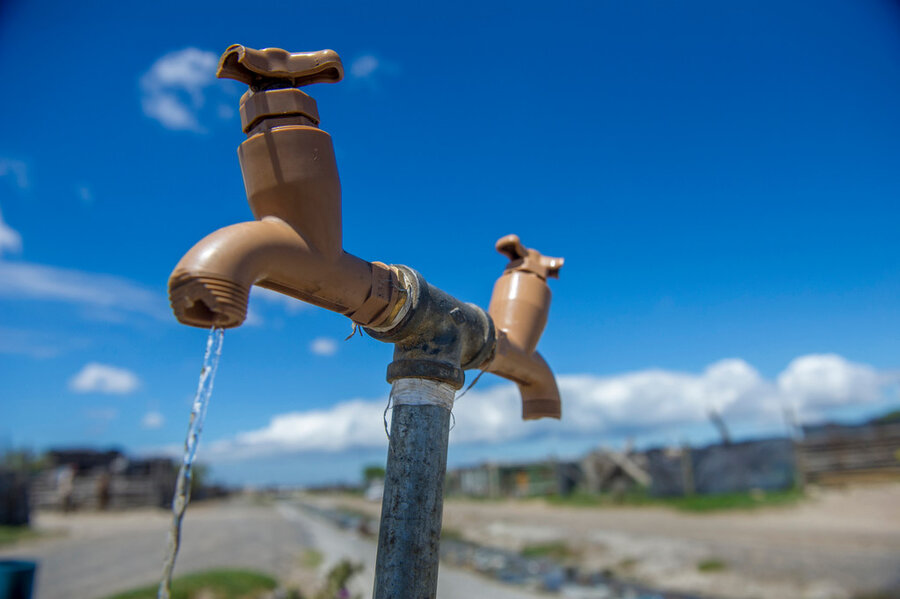What is really scarce in a water drought
Loading...
Earlier this year, the South African city of Cape Town was told that it would make history by April 16. On that date, dubbed Day Zero, it was expected to become the world’s first major city to run out of water because of an extended drought. More than 1 million households would face extreme rationing or no water at all as reservoirs went dry.
But then something happened. The date was pushed back to June 4. And this week, Day Zero was set for July 9.
It was not rain that helped delay the threatened cutoff. Rather, the people of Cape Town have cut their water consumption. In fact, over the past three years, water use has fallen by more than half in a collective effort to share a valuable resource. The residents’ regard for each other went up, and with it, the amount of available water.
The city still has far to go to adjust its supply and demand of water. Yet its ability so far to manage the crisis might serve as a model for other drought-stricken regions.
In California, for example, the state’s Water Resources Control Board plans to permanently reinstate some watering bans and conservation programs as a result of a new drought. In 2015 and 2016, during the last drought, Californians cut consumption by more than 20 percent. But many people have resumed heavy usage after the drought emergency ended a year ago. The state wants people to think longer-term on their water use.
Worldwide, the availability of water is in decline as populations rise and people move to cities. This is forcing a new focus on ingenuity and cooperation to ensure supplies. The physical solutions are obvious: stricter water use standards, more efficient uses, long-haul pipelines, grey water capture, desalination, and other ways to change people’s relationship with water. But the hard part is achieving a change of thinking that brings people together to recognize a common problem that requires shared solutions. A mental flexibility must match the fluidity of water.
This point was made in a 2016 book, “Water is for Fighting Over and Other Myths about Water in the West,” by John Fleck of the University of New Mexico. He warns against the many “myths of conflict” over water that needlessly lead to legal and political stalemates and deny people’s adaptive capacity.
“The most pervasive of the myths is that we are ‘about to run out of water,’ ” he writes. This fear only creates a dangerous feedback loop. It also ignores history.
“Again and again we have seen both city and farm communities adapt and continue to grow and prosper without using more water, often, in fact, using less,” he writes.
The key is to first build up the social capital in a watershed – the bonds that bring people together for an understanding of the resources and each other’s needs. The physical capital, such as rainwater barrels or a new diversion of water flows, then can follow.
“If you are able to sidestep the crisis narrative and recognize that your community can thrive with less water, then the fight with your neighbors seems less necessary and the risks of water wars and a crash diminish.”
That’s good advice as Cape Town and other places are told they are heading toward a Day Zero.







